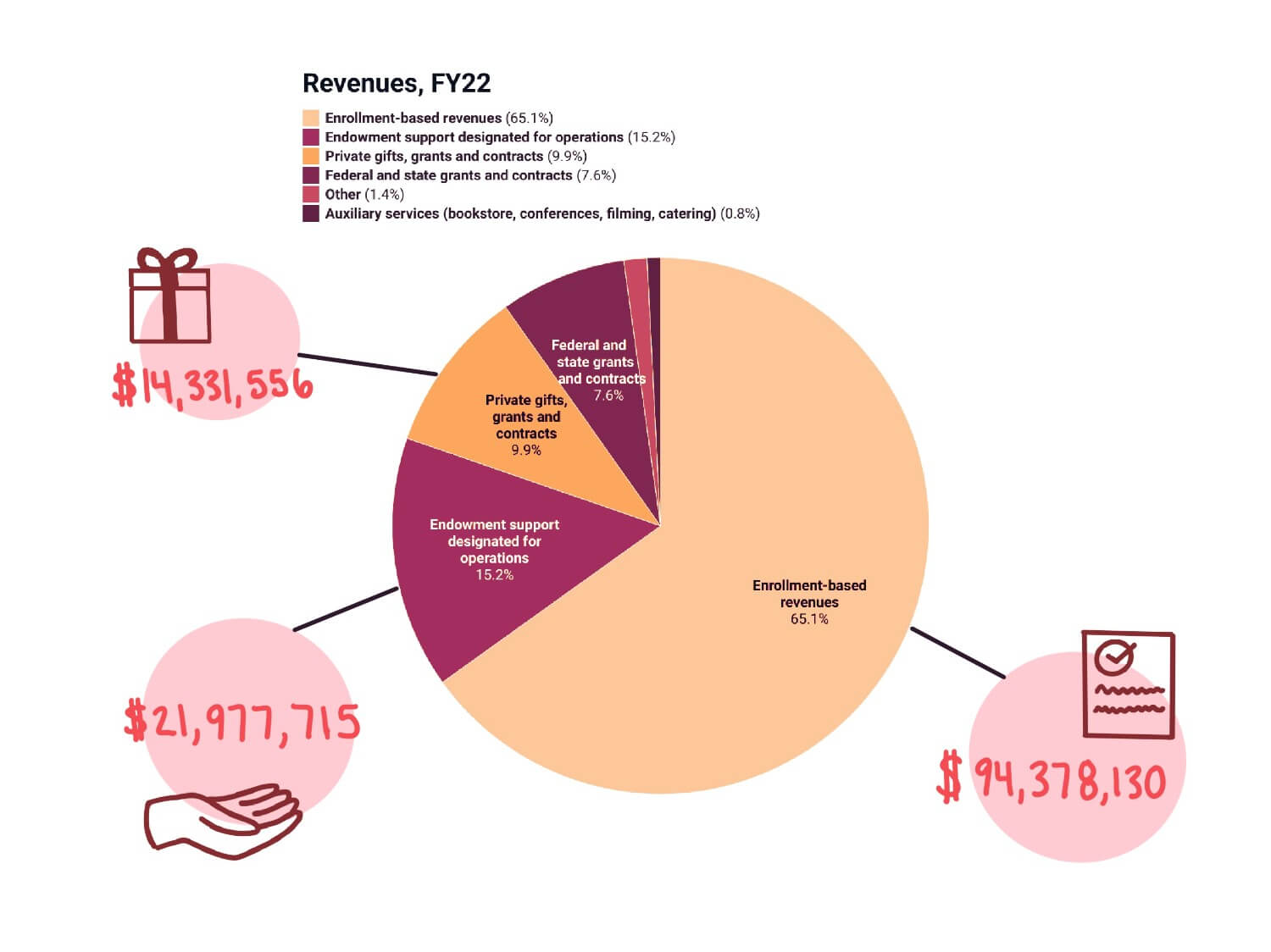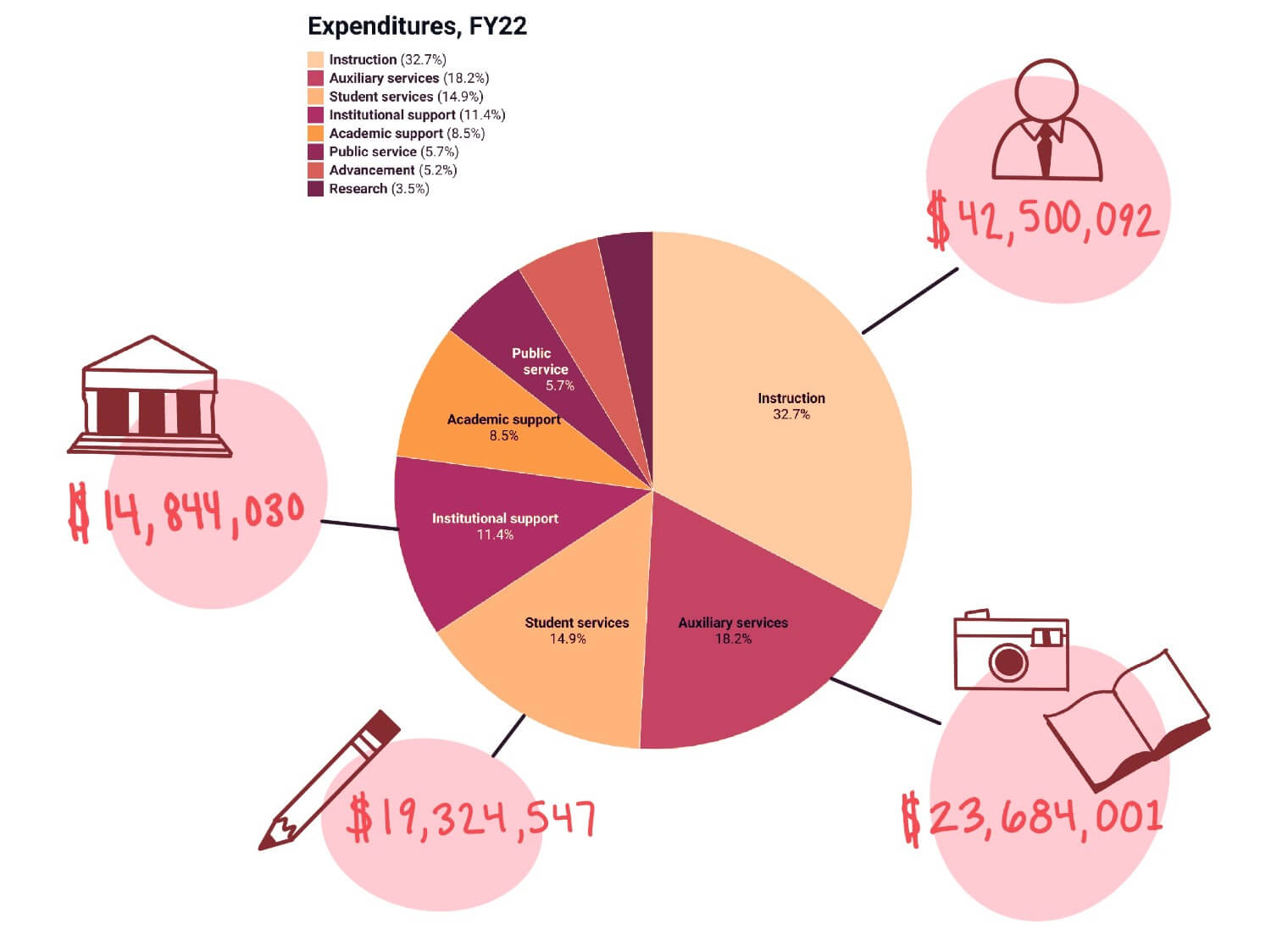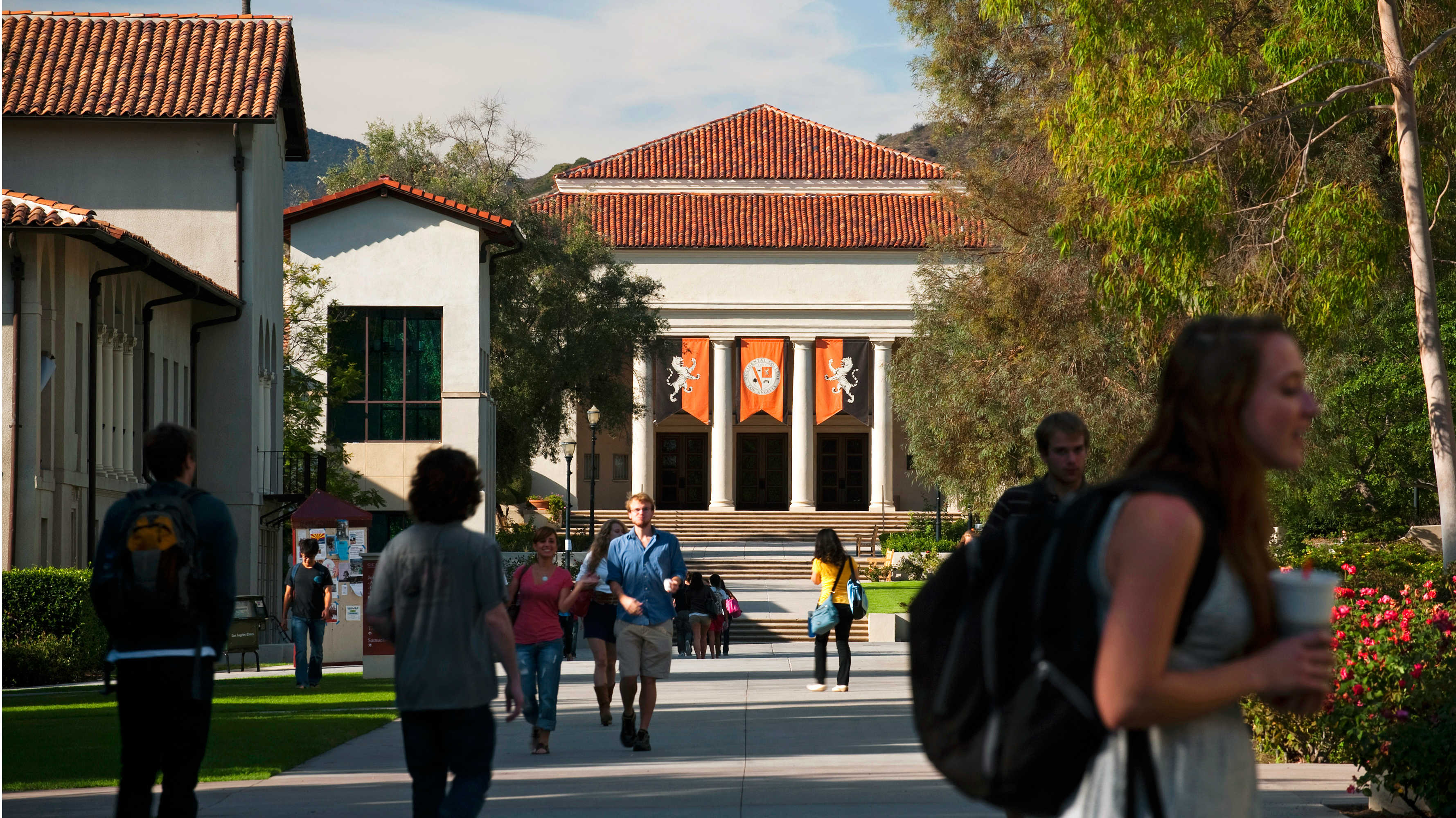Since 2010, national rates of immediate postsecondary enrollment have seen a steady decrease, which has been exacerbated by the ongoing effects of the pandemic. The National Student Clearinghouse Research Center reported that while the rate of decline in Fall enrollment numbers has slowed since Fall 2020 and Fall 2021, the total rate of enrollment in higher education remains 7.5 percent below pre-pandemic levels. Nationwide, many colleges and universities whose main source of revenue comes from student tuition and room and board have felt the financial impacts. However, despite these national trends, Occidental’s own financial performance in Fiscal Year 2022 has managed to see markers of success.
The college endowment
The college reported in June 2022 that the endowment reached an all-time high of over $600 million in Fiscal Year 2022. According to Amos Himmelstein, chief operating officer of the college, the endowment is estimated to currently sit at about $580 million, due to market fluctuation. Himmelstein said the college’s continued financial stability can be attributed to steady rates of enrollment and good stewardship of the college’s endowment.
Even so, Himmelstein said that it is a challenge for the college to keep up with peer institutions, whose endowments can range from $1–3 billion. According to an August 2022 report from The Chronicle of Higher Education, Occidental’s endowment value in Fiscal Year 2021, at $575,810, was ranked 207th among U.S. and Canadian college and university endowments.
“The endowment really matters, because schools that have large endowments can pull more money into their current operating budgets, sometimes even [at] a lower percentage than we are,” Himmelstein said. “So even though we’re doing better than some, we’re still trying to keep up with others, especially [other] liberal arts colleges, that might have even larger endowments.”

According to Himmelstein, a college endowment is meant to be designated for both current spending and future years.
“What you really want is intergenerational equity — so you want to make sure that there’s money that you can draw today that helps fund things for today, but also that the endowment is growing at a rate greater than inflation so that it can keep up with the worth of the endowment,” Himmelstein said.
Himmelstein said that the role of a college endowment is often misunderstood. A portion of the college’s investments are liquid assets, but the rest is harder to access and spend.
“A lot of people think like, ‘You got all that money, why don’t you spend it?’” Himmelstein said. “They don’t realize that you’ve got to keep increasing it so that students, 20, 30, 40 years from now can have an experience.”
Operating budget

Maureen Royer, interim vice president of development, said roughly two-thirds of the college’s annual operating budget comes from student revenue, including tuition and room and board. Student revenue comprised 65.1 percent of the college’s revenues in Fiscal Year 2022.
According to Himmelstein, this reliance on student revenue can pose a challenge for the college’s longer term budget.
“It’s going to be tough because we don’t anticipate increasing tuition by a lot, because it’s getting so expensive. So the percentage increase [in tuition every year] can’t be a large percentage,” Himmelstein said. “We are committed to giving financial aid and so that’s money that comes out of potential revenue.”
Moreover, Himmelstein said the college’s strategic plan is to level out at an enrollment of around 2,000–2,050 students, limiting the possibility of increasing student revenue in future years.
The Oxy Fund and Oxy Campaign For Good
Himmelstein said that because the college does not have very many revenue streams, the key to Occidental’s long-term financial stability — in addition to maintaining the college’s enrollment rate — is fundraising.
“We can’t count on the investments — the last 10 years were really good, but I don’t know that the next 10 years are going to be as good. So what if that actually goes down?” Himmelstein said. “[Going to donors] is really a source of revenue that’s not reliant on student tuition and room and board, and not relying on the whims of the market.”
The Oxy Fund is the major fundraising arm of the college that currently commits to raising around $4.8 million per year for the college’s yearly operating budget, which is designated to be spent that same year, according to Lara Nassar ‘12, director of the Oxy Fund.
“It’s current-use money, so that means it is spent the year that it is raised. That varies from endowment dollars which are in perpetuity, and there to keep investing and putting out a payout per year,” Nassar said.
In addition to being current-use, gifts to the Oxy Fund are also designated as unrestricted.
“They [donors] are giving money to the college with the trust that we’ll spend it truly toward our biggest priorities and greatest needs, so it’s like they’re trusting the college with their dollars,” Nassar said. “[Restricted dollars] are a little more pigeonholed because those monies need to be spent based on donor intent.”
Nassar said the Oxy Fund provides the college a certain amount of flexibility with its operating budget.
“During COVID[-19], we obviously had an increased pool of needs for our students — whether it was providing reimbursements for travel since the lockdown happened right over Spring Break [2020], or additional technology resources and supplies so that both students and staff could equip their home offices and work remotely,” Nassar said. “[The Oxy Fund] allows us to, when needs come up, have funding to put in that direction.”
By contrast, the Oxy Campaign For Good is a comprehensive fundraising campaign that was launched May 19, 2019, and is set to end June 30, 2023. The campaign was the first fundraising campaign of its kind launched by the college in 20 years, and its main priority was to fund endowed scholarships, which help to build the endowment.
“We are on the lower end of endowments for institutions of our caliber,” Nassar said. “That was really part of the main conversation in launching the campaign — building our endowment.”
According to Royer, the Oxy Campaign For Good had a $225 million goal, and met this goal in April 2022. By April 4 of this year, the campaign surpassed $247 million. The campaign aimed to raise money for four priority areas: $100 million for access, $50 million for distinction, $40 million for the campus and $35 million for today.
“All colleges and universities and nonprofit organizations like hospitals engage in campaigns, which is a concerted effort around a key set of priorities,” Royer said.
According to Nassar, a majority of the funds raised by the campaign are endowed, as opposed to current-use, and the campaign receives restricted as well as unrestricted gifts.
Royer said a goal of the campaign, and the Oxy Fund, is to foster a culture of philanthropy among the college community.
“A lot of colleges start with first years saying, ‘You know, when you graduate you’re going to be really asked to step up and give back,’ and Oxy hasn’t had that culture of philanthropy embedded in our culture for as long as a lot of other places,” Royer said. “The messaging and the reach of the campaign has been vital.”
The fourth annual Day For Oxy, a 36-hour fundraising event for the Oxy Campaign For Good, will be April 20.
Expenditures

Each part of the annual operating budget is adjusted year to year. According to Himmelstein, after his team calculates the expected revenue and expenses for the year, the Budget Group makes recommendations for allocating remaining funds based on proposals from each vice president at the college. Himmelstein said the President and Board of Trustees give the final approval on the Budget Group’s recommendations.
The college’s actual yearly operating budget is a subset of the expenditures and revenues reported in the college’s financial statements, according to Himmelstein. An example of funds that might not be in the operating budget are grants that will not necessarily be renewed in future years.
Himmelstein also said the college’s research expenditures are higher than many other liberal arts colleges.
“We have a large research program here — not compared to a university or R1 institution, but compared to a lot of liberal arts colleges,” Himmelstein said.
Himmelstein said providing resources and experiences for current students and making investments in the long-term well-being of the college is a continual balance.
“We have costs that we have to try and keep up, and there’s constant needs. Student needs, faculty needs, employee needs. We want to make sure that the campus is in good shape,” Himmelstein said. “Just maintaining a house is expensive — this is like a really, really big house, with a lot of people living in it.”
Contact Meghan Lee at mlee3@oxy.edu.
![]()



































